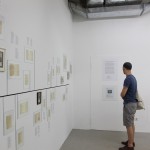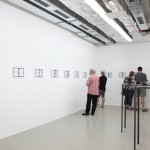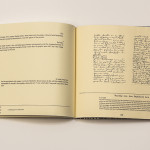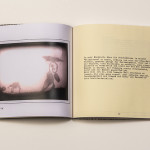-
In the end there was the sea chest
An expedition with nine members from Germany and Austria, leave in 1939 for Scandinavia to verify results of an earlier team. A fall into a cavern in the North of Norway and the adverse conditions in this until then solitary environment lay the foundation stone. For studies and diary entries that show the struggle as well as the joy of discovering this habitat and its flora and fauna in these sixteen months.
It is a fictional story that has come to maturity over the past years and functions as a concept that links each single part of my work.
The visualisation of the story through a time bar
I assume the role of a curator. Supposed that I want to bring the visitors of the exhibition – be it a historic, natural historic, or artistic exhibition – closer to the adventures of the expedition. Formally, I would adhere to the museum way of presentation. I would provide only few, but specific Information.
To this end, I became a forger of documents. I adopted a handwriting that could have been typical for that time, and began to write down the story in a journal. Encountered photographs – which I attributed to new persons and situations – and forged newspaper articles complete the illusion of events long gone.
The installation serves as an image, as well as the source of mere information. -
Am Ende war die Seekiste
Eine Expedition mit 9 Teilnehmern aus Deutschland und Österreich, die sich im Jahre 1939 auf den Weg nach Skandinavien machen, die Ergebnisse einer vorangegangenen geologischen Forschungsreise zu verifizieren. Ein Sturz in einer Grotte im Norden Norwegens und die widrigen Umstände, die sie in dieser bis dato abgeschlossenen Welt halten, legen den Grundstein. Für Studien und Tagebucheinträge, die den Kampf, aber auch die Entdeckerfreude in diesem Biotop und dessen Flora und Fauna in diesen 16 Monaten festhalten.
Es ist eine fiktive Geschichte, die in den als Konzept funktioniert, die jeden einzelnen Teil dieser Arbeiten verbindet.
Die Visualisierung der Geschichte mittels eines Zeitstrahls
Ich versetze mich in die Rolle einer Kuratorin. Gesetzt den Fall, ich möchte den Besuchern einer Ausstellung (nun sei es dahingestellt, ob historisch, naturhistorisch, oder künstlerisch) die Expeditionserlebnisse näherbringen, würde ich mich formal an eine museale Präsentationsform halten und sie mit wenigen, jedoch gezielten Informationen versorgen.
Dazu ging ich unter die Dokumentenfälscher. Ich eignete mir eine Handschrift an, wie sie für diese Zeit hätte typisch sein können und begann, die Geschichte in einem Tagebuch niederzuschreiben. Gefundene Fotografien, denen ich andere Personen und Situationen zuschrieb, sowie gefälschte Zeitungsartikel, vervollständigen die Illusion von vergangenen Erlebnissen.
















